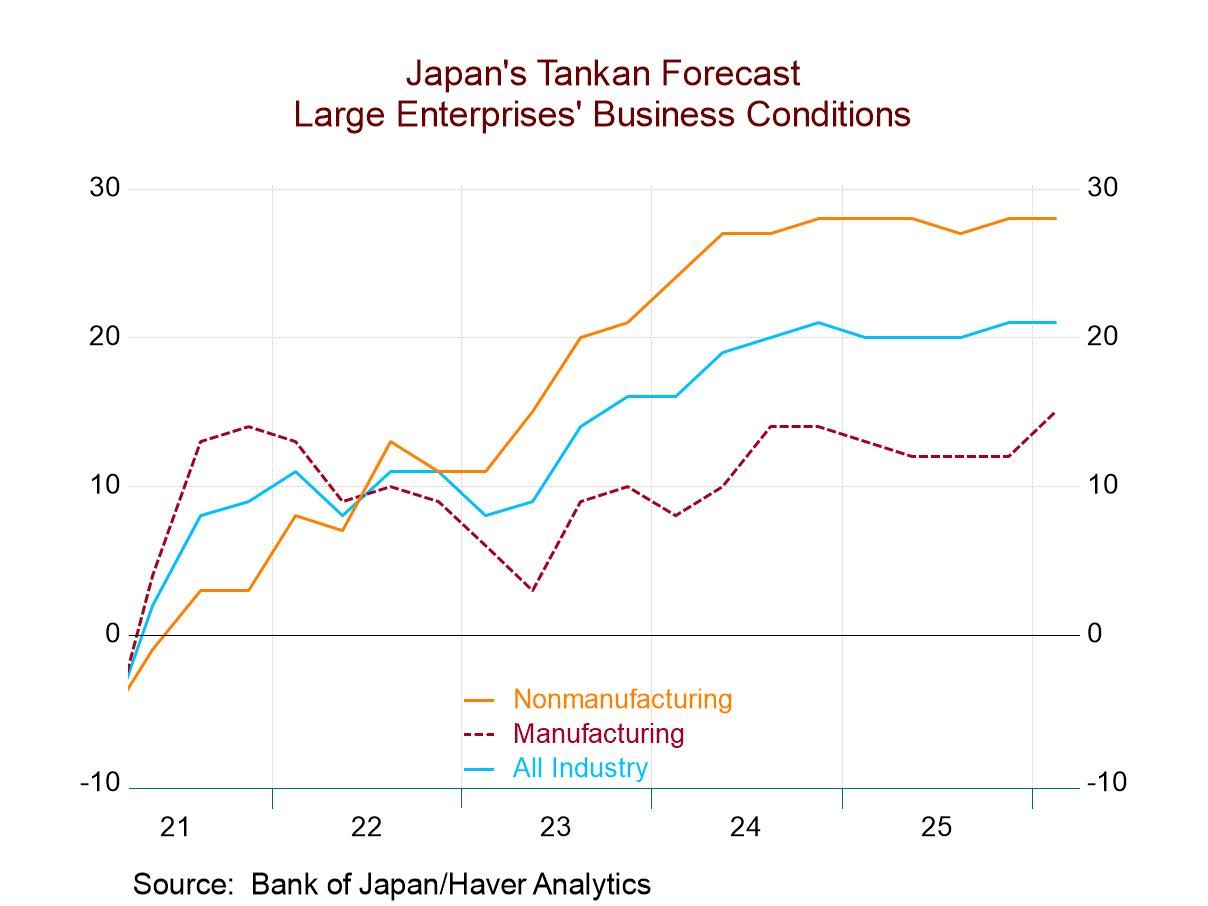 Global| Jun 26 2018
Global| Jun 26 2018Japan’s PPI Jumps
Summary
Japan’s PPI jumped by 0.5% in May as both consumer goods prices and intermediate goods prices gained 0.6% on the month. The headline PPI rose by 0.5% after a meager 0.1% increase in April and a 0.2% decline in March. In part, as a [...]
 Japan’s PPI jumped by 0.5% in May as both consumer goods prices and intermediate goods prices gained 0.6% on the month. The headline PPI rose by 0.5% after a meager 0.1% increase in April and a 0.2% decline in March.
Japan’s PPI jumped by 0.5% in May as both consumer goods prices and intermediate goods prices gained 0.6% on the month. The headline PPI rose by 0.5% after a meager 0.1% increase in April and a 0.2% decline in March.
In part, as a result of the PPI’s recent monthly progression, the sequential path of PPI inflation continues to work lower with three-month inflation at a 1.6% pace, below its six-month pace of 2.2% which in turn is below is 12-month pace of 2.7%. Still, there is a 0.5% gain in the PPI in May to be reckoned with in the calculations for the months ahead. PPI inflation may be headed lower on this progression, but that clearly is not going to be the case going forward. Nevertheless, the PPI path may have a much milder gradient in the future when oil prices settle down.
On a QTD (quarter-to-date) basis, the PPI is up at a 2.7% pace (annualized). On a QTD basis, it is intermediate goods that are leading the inflation rate higher with a gain at a 4.4% annual rate. Also in the QTD, oil prices are expanding at a 66.8% annual rate. Clearly, oil is partly responsible for the pick-up of inflation in Japan.
Capital goods inflation, the least affected by commodity prices, has stepped up slightly, but it is running at a pace of about 1% or less on all horizons including the QTD measure.
The Bank of Japan is trying to get the inflation rate up to 2%. But even in the PPI, consumer goods prices are only gaining 1.7% on a QTD basis and they are falling over three months and six months.
The relationship between Japan’s PPI and CPI is not tight. The PPI can explain less than 20% of the variance in the CPI. With so much of the PPI gain seeming to come from oil prices, it does not look like the BOJ is really getting any closer to its objective of having a 2% rate of inflation. However, the chart shows a different type of PPI/CPI relationship. When the PPI is above the CPI, the CPI generally is accelerating. And when the PPI is below the CPI, the CPI generally is decelerating. Since the PPI gain currently is above the CPI gain, the PPI points to some further acceleration for the CPI, but note that historically that effect can be relatively small.
The BOJ continues to pursue its goal for inflation and to assert its determination to keep stimulative policies in place as it chases after its goal despite what has been very limited progress.

Robert Brusca
AuthorMore in Author Profile »Robert A. Brusca is Chief Economist of Fact and Opinion Economics, a consulting firm he founded in Manhattan. He has been an economist on Wall Street for over 25 years. He has visited central banking and large institutional clients in over 30 countries in his career as an economist. Mr. Brusca was a Divisional Research Chief at the Federal Reserve Bank of NY (Chief of the International Financial markets Division), a Fed Watcher at Irving Trust and Chief Economist at Nikko Securities International. He is widely quoted and appears in various media. Mr. Brusca holds an MA and Ph.D. in economics from Michigan State University and a BA in Economics from the University of Michigan. His research pursues his strong interests in non aligned policy economics as well as international economics. FAO Economics’ research targets investors to assist them in making better investment decisions in stocks, bonds and in a variety of international assets. The company does not manage money and has no conflicts in giving economic advice.






